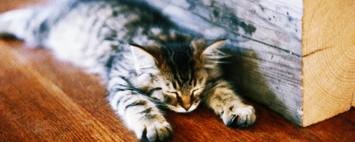So we have THREE (do you believe it?! A whole three!) ways in which cats altered or slightly perturbed human culture. Let’s get to it.
1) FALSE IDOLS
While the ancient Egyptians weren’t the first to completely domesticate the cat, they arrived soon after. (1) “Although ancient Egyptian culture cannot claim initial domestication of the cat among its many achievements, it surely played a pivotal role in subsequently molding the domestication dynamic and spreading cats throughout the world. Indeed, the Egyptians took the love of cats to a whole new level.” (2) The Egyptians’ religious regard for the cat combined with their influence throughout the Middle-East was the primary factor in the the wildcat’s ascendance to its accepted form of house cat, an early contribution to the notion of pets purely for pleasure. Carlos A. Driscoll et al. write
By 2,900 years ago the domestic cat had become the official deity of Egypt in the form of the goddess Bastet, and house cats were sacrificed, mummified and buried in great numbers at Bastet’s sacred city, Bubastis. Measured by the ton, the sheer number of cat mummies found there indicates that Egyptians were not just harvesting feral or wild populations…
So, beyond the fact that Egyptians clearly had a problem, the domestication and worship of cats both demonstrated and increased the closeness of the relationship between our two species. Certainly the worship, sacrifice, and mummification of cats was a significant and important facet of early civilization and culture.
2) FANCY BREEDS AND WEIRDO BOURGEOISIE
During the 19th century, Western cultures began breeding cats alongside dogs for beauty and presentation. (2) (You should be picking up on a theme here – these stories all involve weird people). “In 1871 the first proper fancy cat breeds—breeds created by humans to achieve a particular appearance—were displayed at a cat show held at the Crystal Palace in London (a Persian won, although the Siamese was a sensation).” (2) Today, we have all sorts of crazed clique organizations, such as the Cat Fancier’s Association and the International Cat Association. The development of such linear-focused subcultures is an interesting development in and of itself, but also leads into our next topic….
3) INTERNET CULTURE
If you really want to get an idea for just how imbedded cats are in online culture, check out this, this, this, this, or this.
So cats are all over the internet. We get it. But how does this affect society? Well, you can’t really get on the internet without encountering cats. Sites from Imgur, to Facebook, to Reddit, all thrive off of cat photos, be they funny, cute, creepy, etc. With current and future generations growing up in front of a computer screen, cats will have a bigger and bigger place in society, pop culture, teenage culture, and most importantly – culture in general. The internet has the strange ability to occasionally affect things in the real world, generally in kooky, weird, and unexpected ways. As cats continue to dominate online content, we may very well see this spill over into legitimate (implying the internet lacks legitimacy) mediums and subjects of discussion.
For an attempt at an academic take on origin theories for such a phenomena, I’d recommend reading this and this.
(1) Stephen J. O’Brien, Warren E. Johnson “The Evolution Of Cats.” Scientific American 297.1 (2007): 68-75. Psychology and Behavioral Sciences Collection. Web. 5 May 2013.
(2) Carlos A. , Discroll, Clutton-Brock Juliet, Kitchener Andrew C., and O’Brien Stephen J. “The Taming of the Cat.” Scientific American . 06 2009: 68- 74. Print.
